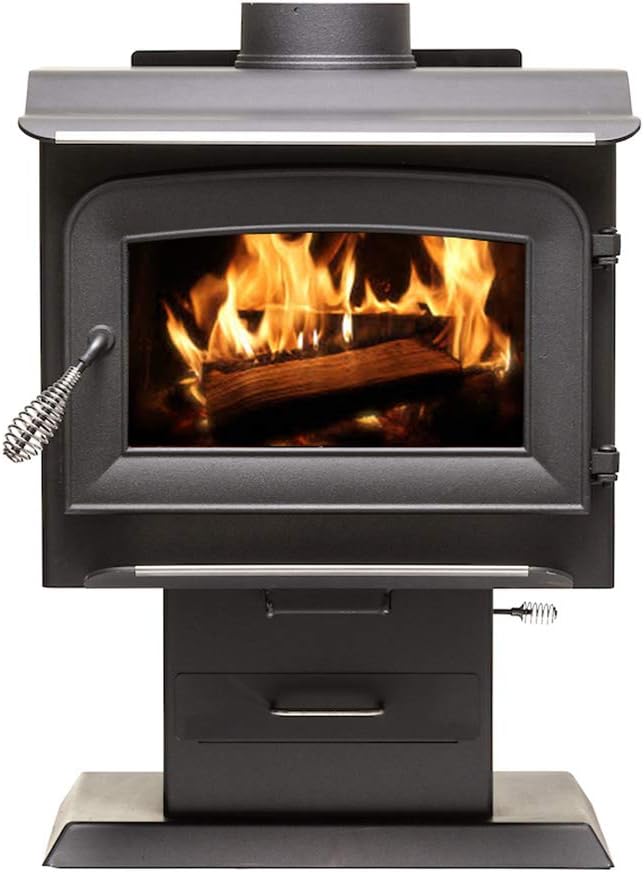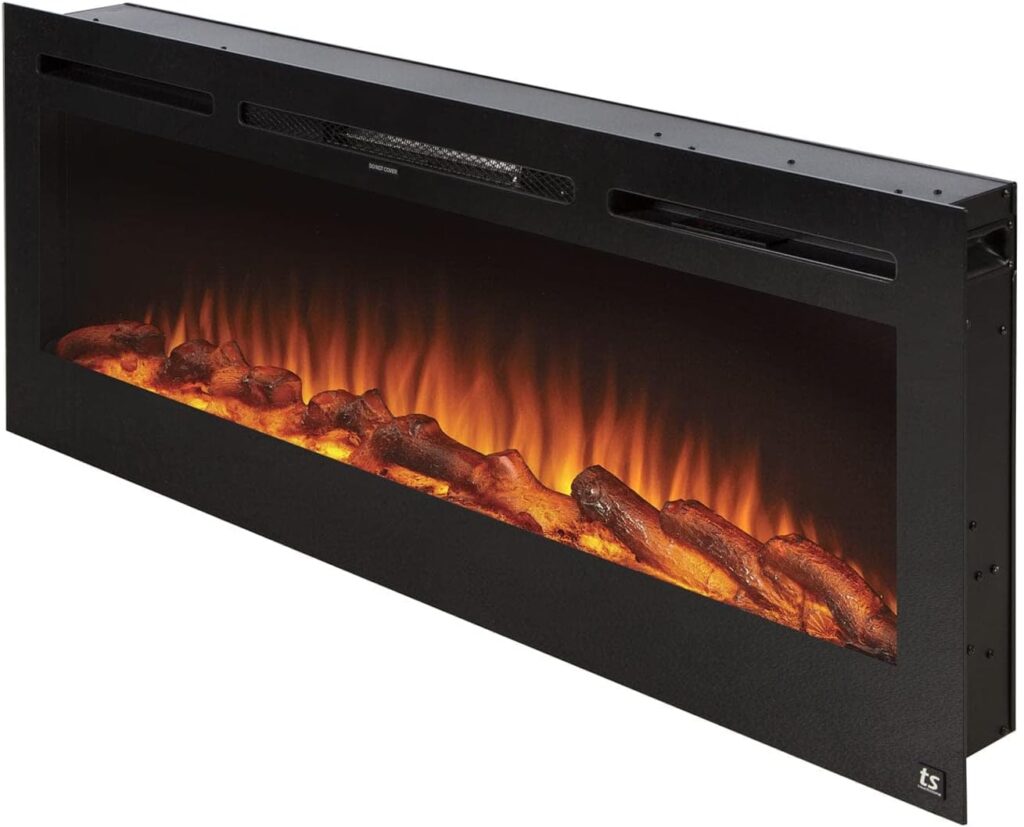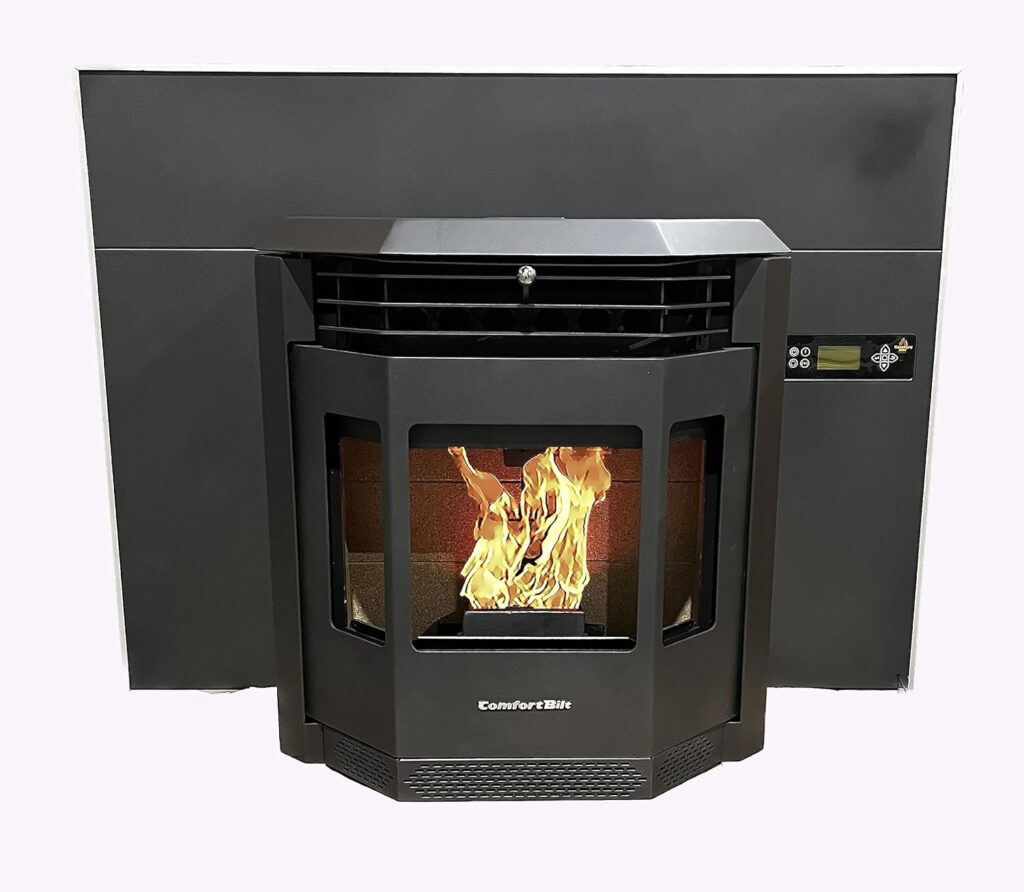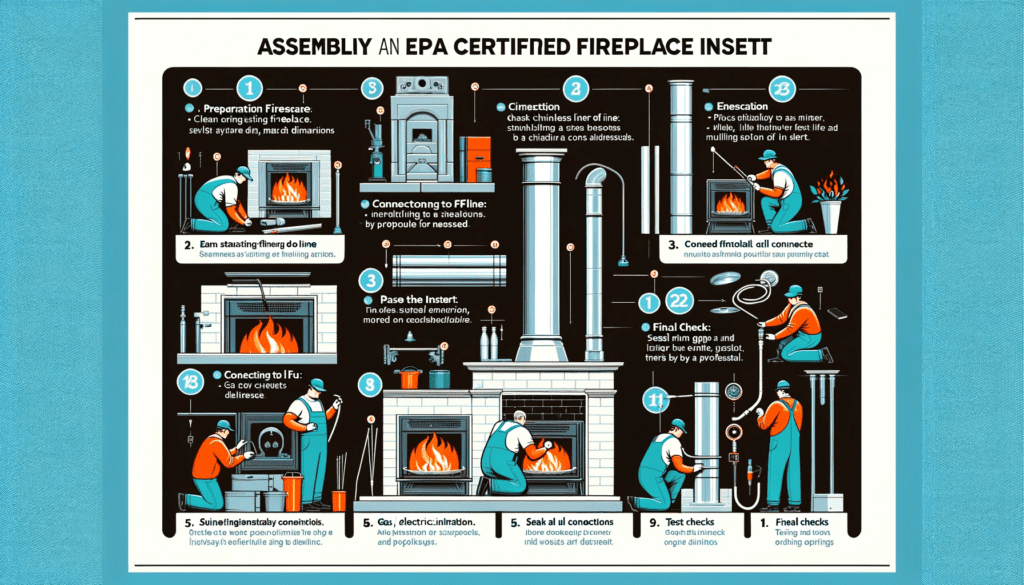When selecting a fireplace insert for your home, considering EPA certified options is a choice that combines environmental responsibility with efficient heating. EPA certified fireplace inserts, endorsed by the U.S. Environmental Protection Agency, adhere to strict emission standards, significantly reducing the amount of smoke and fine particles released into the air compared to traditional fireplaces.
This not only helps in reducing air pollution but also minimizes health risks associated with poor air quality. Moreover, these inserts are designed to be more efficient, producing greater heat output from less fuel, which can lead to considerable savings on heating costs over time.
Opting for an EPA certified fireplace insert is a smart decision that aligns with contemporary environmental standards, providing sustainable warmth and comfort for your home.
Contents
- 1 Buying an EPA Certified Fireplace Insert: Factors to Consider
- 2 Size and Heating Capacity
- 3 Efficiency, Flexibility, and Style
- 4 Innovative Technology and Design in Modern EPA Certified Fireplace Inserts
- 5 Artistic Realism, Durable Construction, and Advanced Burner Efficiency
- 6 Step-by-Step Guide to Assembling an EPA Certified Fireplace Insert
- 7 Illustrating the BTU and Do’s and Don’ts for the Above Models
- 8 Conclusion
- 9 Frequently Asked Questions
Buying an EPA Certified Fireplace Insert: Factors to Consider
Size and Heating Capacity
When considering fireplace inserts, size and heating capacity are critical factors to ensure optimal performance and efficiency. The size of the insert must be compatible with the existing fireplace dimensions for proper installation.
Moreover, the heating capacity, typically measured in BTUs (British Thermal Units), determines the area the insert can effectively warm.
An insert with a higher BTU rating can heat a larger space, but it’s essential to match this with the size of the room to avoid over or under-heating.
Ashley Hearth AW1120E-P 1,200 Sq. Ft. EPA Certified

Ashley Hearth AW1120E-P 1,200 Sq. Ft. EPA Certified
Review
The stove’s ability to heat up to 1,200 square feet is impressive. Living in a moderately sized home, this feature ensures that my entire living area remains warm and comfortable, especially during the cold months. The fact that it meets the EPA “Step 2” 2020 Certification Guidelines is a testament to its efficiency and eco-friendliness, which is something I deeply appreciate.
Operating the stove has been quite straightforward. Loading logs is simple, and the stove efficiently burns them, providing a steady and consistent heat output. The maintenance is relatively easy too, which is a huge plus for someone like me who prefers hassle-free appliances.
One aspect that I find a bit challenging is the initial installation process. It requires a bit of know-how and effort to set up correctly. I would recommend professional installation if you’re not experienced with installing wood stoves.
Efficiency, Flexibility, and Style
Fireplace inserts today excel in energy efficiency, offering high heat output with lower fuel use. Their flexible installation options, including electric models, allow for easy integration into existing fireplaces, suiting various spaces.
Additionally, contemporary designs and aesthetics of these inserts enhance the visual appeal of interiors, merging functionality with style.
This blend of efficiency, ease of installation, and aesthetics makes them a favored choice for home heating upgrades.
Touchstone Smart Electric Fireplace

Touchstone Smart Electric Fireplace
Review
The functionality of the Touchstone Fireplace is top-notch. Its minimalist frame and realistic flame effect create an inviting ambiance, enhancing the room’s decor without the clutter or maintenance of a traditional fireplace. In terms of energy efficiency and safety, this electric fireplace stands out.
It’s designed to provide ample heat without the high energy costs associated with conventional fireplaces. The lack of real flames ensures a safer alternative, especially for homes with children or pets, eliminating risks like open flames or embers.
The EPA certification further underscores its commitment to energy efficiency, ensuring it operates with minimal environmental impact. This combination of stylish design, energy-saving features, and enhanced safety makes it an attractive choice for modern homes.
One aspect that could be improved is the sound of the fireplace.
Innovative Technology and Design in Modern EPA Certified Fireplace Inserts
Modern fireplace inserts blend innovative heating technology, realistic flame effects, and sleek design aesthetics for an enhanced home experience. They often employ advanced heating techniques like infrared quartz, which efficiently warms spaces while maintaining natural humidity, ensuring comfortable and non-drying heat.
Realistic flame effects, achieved through cutting-edge technologies, offer adjustable brightness and color, creating an ambiance indistinguishable from traditional fireplaces.
Additionally, these inserts are designed with style in mind, featuring elegant and contemporary looks that complement various interior decors.
Comfortbilt HP22i Pellet Stove Fireplace Insert

Comfortbilt HP22i Pellet Stove Fireplace Insert
Review
The most impressive aspect of this pellet stove is its efficiency. It heats up my space quickly and maintains a consistent temperature, which is a huge plus during cold winters. The fact that it’s EPA certified adds to its appeal, as I’m conscious about reducing my carbon footprint.
This certification assures me that I’m using a product that meets high environmental standards. The design of the HP22i is both modern and functional. It fits well into my existing fireplace, and the build quality is robust, promising durability. The large viewing window is a nice touch, allowing me to enjoy the ambiance of a flickering fire.
However, one drawback I’ve noticed is the noise level. While it’s not excessively loud, the fan and the pellet feeder do produce a noticeable sound during operation, which can be a bit distracting in a quiet room.
Artistic Realism, Durable Construction, and Advanced Burner Efficiency
Contemporary fireplace inserts showcase a remarkable blend of realistic design and artistry, high-quality construction, and efficient, versatile burner technology.
They often feature meticulously crafted log sets or flame effects, designed to emulate the authentic look and ambiance of traditional fires, appealing to those who value aesthetics. The construction of these inserts, using durable materials like ceramic refractory, ensures longevity and resilience, essential for consistent performance.
Additionally, advanced burner technologies offer flexibility in fuel type and efficiency, with features like adjustable BTU outputs and easy ignition systems, catering to diverse needs and enhancing overall user convenience.
Step-by-Step Guide to Assembling an EPA Certified Fireplace Insert

Preparation:
Ensure the existing fireplace is clean and free of debris. Check the dimensions of the fireplace opening and ensure it matches the insert size.
Inspection:
Examine the chimney and flue to ensure they are in good condition and suitable for the new insert.
Installation of a Liner (if required):
For wood-burning inserts, a stainless steel liner may need to be installed in the chimney to ensure proper venting.
Positioning the Insert:
Carefully place the insert into the fireplace opening. Make sure it’s level and properly aligned.
Connecting to the Flue:
Connect the insert to the flue or chimney liner. This may require professional assistance to ensure a proper and safe connection.
Gas or Electrical Connections:
For gas or electric inserts, connect to the gas line or electrical outlet as required. This step should be done by a qualified professional to ensure safety and compliance with local regulations.
Sealing and Insulation:
Seal any gaps between the insert and the fireplace opening to prevent heat loss. Use fire-resistant materials for insulation.
Final Checks:
Double-check all connections, ensure everything is secure, and there are no obstructions in the venting system.
Testing:
Light a small fire (for wood or gas inserts) or turn on the insert (for electric models) to test its operation. Monitor for any issues like smoke spillage or unusual noises.
Illustrating the BTU and Do’s and Don’ts for the Above Models
Conclusion
When it comes to selecting and installing an EPA certified fireplace insert, several crucial aspects need consideration. Choosing the right model involves assessing factors like EPA certification, size, heating capacity, efficiency, design, and fuel type.
Products like the Ashley Hearth AW1120E-P, Touchstone Smart Electric Fireplace, ClassicFlame 23II042FGL, and Comfortbilt HP22i showcase a range of features from energy efficiency and smart technology to high heating capacity and environmental compliance. The installation process, though varying by model, typically includes preparation, flue connection, and safety checks, often requiring professional assistance.
Frequently Asked Questions
Are there different fuel types for EPA certified fireplace inserts?
Yes, EPA certified fireplace inserts can use various fuels like wood, gas, or pellets. Each type has its benefits and considerations in terms of efficiency, maintenance, and overall experience.
hat does EPA certification mean for a fireplace insert?
EPA certification indicates that the fireplace insert meets specific environmental standards set by the U.S. Environmental Protection Agency. These standards are designed to reduce air pollution by limiting the amount of particulate emissions from the insert.
Can I install an EPA certified fireplace insert myself?
While it’s possible for a DIY installation, it’s generally recommended to have a professional install your fireplace insert. This ensures safety, proper venting, and compliance with local building codes, especially for gas or electric models.

